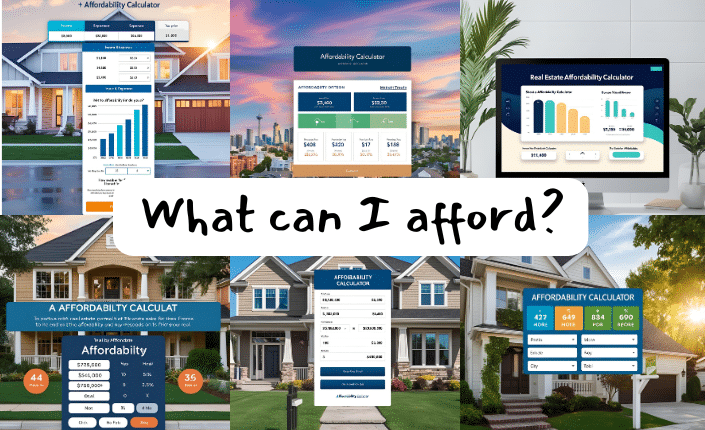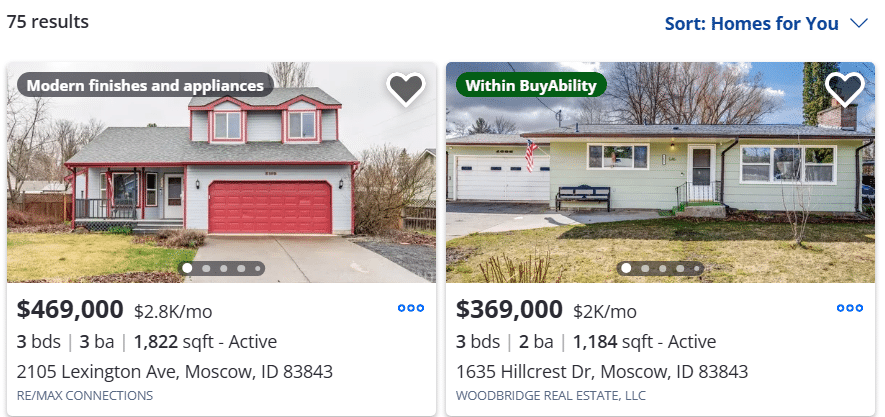
Only around 40% of listings on Zillow are affordable. Or, to put it another way, only around 40% of properties on the world's most popular real estate website are relevant to the majority of its users, according to its own definition.*
Similarly worrying percentages can be found elsewhere. According to Idealista, only around 45% of Spanish listings are affordable, and in the UK, government statistics show that only 3% of properties sold in London were affordable in 2024. Affordability is probably becoming ever more of an issue wherever you're reading this as well—there aren't many countries with an oversupply of affordable housing.
Why haven't we been hearing more about this in our industry then? If the pool of people who can actually afford to buy a house is diminishing wouldn't it make sense that fewer people would be using real estate portals?
Well no. Major portals around the world have not experienced a drop-off in traffic commensurate with the drop-off in affordability over the last five years. So, either portals are generating fewer leads (or at least fewer good quality leads) as their audience slowly turns from buyers to dreamers, or they're helping people to find and view properties that are deemed unaffordable.
Just because users enjoy looking at unaffordable properties, and just because portals can still make good money from unaffordable listings, doesn't mean that the companies that run them can or should look the other way.
Not to get too profound about this, but 'shelter' and 'property' are two of the most fundamental human desires and are words that feature quite a long way up Maslow's hierarchy of needs.
In searching for a home to fulfill these elemental needs, every individual will have their own wish list with its own hierarchy. While a South-facing garden and granite countertops might be towards the bottom of this hierarchy, affordability will always be at the very top above even the home's location.
Online shop window businesses need to be attuned to the fears, uncertainties and doubts of their users. And when it comes to real estate, the vast majority of those centre around affordability. Over the last five years, however, we haven't reported all that often on real estate marketplaces building things that address affordability FUDs (to use the Product Management terminology).
That's not to say that companies haven't recognised that affordability is the biggest issue for people using their platforms. When we studied 51 leading real estate portals from around the world earlier this year, we found that 40 of them had some sort of AVM on their site (up from 34 in 2021) and that these are increasingly easy to use and require fewer fields of user input.
Mortgage calculators are another fairly ubiquitous sight on major real estate portals but they are a tool with clear limitations.
Just as showing users homes within a certain distance of their office doesn't tell them how long it will take them to get to work, showing them listings under a certain price isn't showing them a home they can definitely afford.
What turns a casual browser into a lead is usually confidence. Mortgage calculators can instil some confidence that the house a user is looking at is worth an enquiry, and an AVM can tell them how much their current home may be worth, but both deal in theoretical numbers, so they can only go so far. What a portal needs to help the user make the leap to filling in the enquiry form, and to make sure the lead they generate is serviceable for the agent receiving it, is the confidence that can only come from an actual mortgage lender.
Most real estate portals are not mortgage lenders, so they cannot impart the kind of institutional confidence that a listing is affordable. But a few of them are lenders, and a few others have deep enough relationships with lenders that they can transmit the necessary confidence without sending the user to a third party.
Zillow, for example, is a mortgage lender via its Zillow Home Loans division. The people in charge of Zillow's consumer-facing marketplace took advantage of its mortgage division to create the portal's BuyAbility tool.
Released in May 2024, BuyAbility asks the user a few basic questions about their income, how much they are looking to pay per month and any debt they may have before displaying an estimate of the 'suggested target price' for that user and an upper range 'BuyAbility' price that the user could theoretically afford.
Where the tool differs from a mortgage or affordability calculator is that it then prompts the user to go through another round of questions to take the next step and actually become pre-qualified via Zillow Home Loans. Importantly, it does this while keeping the user on the same site. If the user isn't ready to take that step, no problem. After filling in the basic information, a user can now search Zillow's portal and see listings they can afford, tagged with a 'Within BuyAbility' mark on results pages.

Image Credit: Zillow
One portal that is not a mortgage lender but which does manage to impart a level of confidence beyond a simple mortgage calculator is Rightmove.
Launched in 2023 in partnership with Nationwide Bank, Rightmove's Mortgage in Principle (MiP) tool allows users to assess their borrowing affordability and obtain an almost instant mortgage decision directly through the Rightmove platform. Not only is the tool valuable for Rightmove's burgeoning mortgage business (which saw revenues more than double to £4.7 million in 2024), but the portal has said that an approved MiP lead is 45 times richer in data than a regular property enquiry—great news for a portal perennially needing ways to justify price rises to agents.
When considering whether to do something to help ease affordability worries, portals shouldn't think about the issue in binary terms. For a real estate marketplace, the affordability crisis is not either a macro headwind or a moral obligation, it is both of those and also a great opportunity for companies that own trusted brands at the top of the real estate funnel.
The difference between a good lead and a bad lead is often just a few data points and some confidence. What Zillow and Rightmove have done is leverage their brand equity, relationship with a lender and user FUDs to give users confidence and, in doing so gather the most valuable data points around a lead.
The psychology part is important here. The opportunity lies in helping the user take that first non-intimidating, semi-official step towards buying a home and then using the result of that step to suggest homes, rather than just doing some basic maths via a calculator or sending them off the portal as a lead to a third party.
This type of on-portal pre-qualification may become a must-have feature as homes become less affordable. It will probably be easier to build for market leaders who tend to have either their own mortgage businesses or close ties with third-party mortgage lenders.
But by that same token, it will be easier still for any mortgage lenders looking to get into discovery to build such a tool. Rocket's recent $11 billion acquisition spree, which included the $1.75 billion acquisition of brokerage and discovery site Redfin, is a pretty clear indicator that it isn't just portal companies thinking about these issues.
Portals around the world might have been put off getting into mortgages by some prominent failures among their peers. But lenders have yet to be put off getting into the portal game. In an increasingly unaffordable market, lender-portal hybrids may end up inspiring user confidence and generating quality leads better than most pure portal businesses.
* Credit to Zillow for making all their housing data available for free (along with explanations) here.